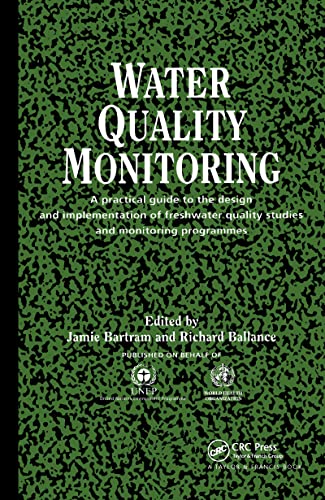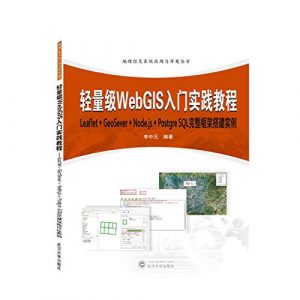Understanding Environmental Monitoring Technology
In today’s fast-paced world, the significance of environmental monitoring cannot be overstated. As climate change, pollution, and habitat loss take center stage in global discussions, effective monitoring strategies become essential for providing insights and data to mitigate these pressing issues. The growing field of environmental monitoring technology provides tools for researchers, environmentalists, and engineers to collect, analyze, and harness data from various ecosystems.
This blog post will highlight some remarkable books that offer in-depth knowledge and practical guidance on various aspects of environmental monitoring. From water quality assessments to habitat mapping, the right literature will not only enhance your understanding but also empower you to contribute to a healthier planet.
Featured Books on Environmental Monitoring
Water Quality Monitoring: A Practical Guide to the Design and Implementation of Freshwater Quality Studies and Monitoring Programmes
This comprehensive guide delves into the intricacies of freshwater quality monitoring, making it essential for professionals in environmental research. Authored by experts in the field, it covers critical aspects such as the design of monitoring programs and the methodologies for data collection and implementation. Whether you are working in academia, industry, or government agencies, this book equips you with the necessary tools to assess water quality effectively. Each chapter articulates the challenges faced in freshwater monitoring and provides best practices based on real-world case studies, thus bridging the gap between theory and practical application.

Hazardous Materials Monitoring and Detection Devices
Understanding the risks associated with hazardous materials is crucial for ensuring safety and compliance across industries. This book provides a detailed overview of various detection devices and their applications in monitoring hazardous materials. It not only emphasizes the technical specifications of these devices but also their significance in preventing accidents and safeguarding public health. For professionals involved in safety management, regulatory compliance, and environmental protection, this book serves as an invaluable resource that combines theoretical insights with practical applications.

GIS and Environmental Monitoring: Applications in the Marine, Atmospheric and Geomagnetic Fields
Geographic Information Systems (GIS) play a pivotal role in environmental monitoring, and this book expertly explores its applications across different environmental fields. From marine ecology to atmospheric sciences, it showcases how GIS technology can enhance data collection, visualization, and analysis. Readers will appreciate the case studies presented that illustrate how GIS is utilized to tackle real-world environmental challenges. This resource is ideal for environmental scientists, urban planners, and policymakers seeking to utilize spatial data to inform their decisions.

Environmental Monitoring and Characterization
This book is a foundational text on environmental monitoring that integrates both theoretical and practical aspects. The authors provide insights into various environmental pollutants and their impacts, alongside methodologies for monitoring and characterization. It acts as a reference guide for professionals tasked with environmental assessments and analysis. With detailed protocols and data interpretation strategies included, this book is indispensable for anyone involved in environmental monitoring.

Effective Ecological Monitoring
This guide emphasizes the need for effective ecological monitoring strategies to garner actionable insights into ecosystem conditions and health. Covering techniques and methodologies relevant to various environments, the book illustrates how monitoring can lead to better conservation practices and environmental stewardship. It is an essential companion for ecologists, conservationists, and environmental practitioners who recognize that effective ecological monitoring is key to understanding and preserving nature.

Continuous Emissions Monitoring
This indispensable resource discusses continuous emissions monitoring systems and their importance in regulatory compliance. The book covers technology, legal requirements, and operational guidelines for implementing a reliable emissions monitoring system. Perfect for environmental engineers and compliance managers, it provides insights into real-time data collection that is crucial for managing emissions effectively.

Real-Time Environmental Monitoring
This book presents innovative methods for real-time environmental monitoring. It discusses the integration of technology in data collection, providing strategies for immediate analysis and decision-making. The relevance of real-time monitoring in emergency situations is crucial, as it allows for prompt responses to environmental threats. This resource is essential for environmental scientists who require timely data to inform their actions.

GIS for Environmental Applications: A Practical Approach
This practical guide explores the applications of GIS in various environmental contexts. It serves as a hands-on resource for environmental practitioners, providing insights into data management, analysis, and visualization techniques. This book is pivotal for any environmental professional interested in utilizing GIS tools to address ecological issues effectively.

Industrial Air Pollution Monitoring (Environmental Management Series)
This book offers an in-depth analysis of air pollution monitoring within industrial contexts. With a focus on regulations, methodologies, and case studies, it is integral for environmental managers and compliance professionals seeking to understand and implement effective air quality monitoring strategies. By combining theoretical knowledge with practical insights, this book becomes a vital addition to any environmental management library.

Environmental Sampling and Analysis for Technicians
This essential guide is designed for technicians involved in environmental sampling and analysis. It covers various sampling techniques and analysis methods, providing clear, step-by-step instructions. Its focus on hands-on techniques makes it a suitable resource for environmental training programs. With case studies included, technicians can learn from practical applications in the field.





































